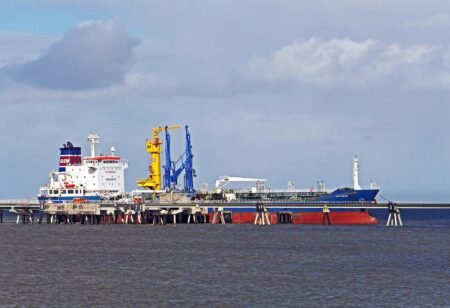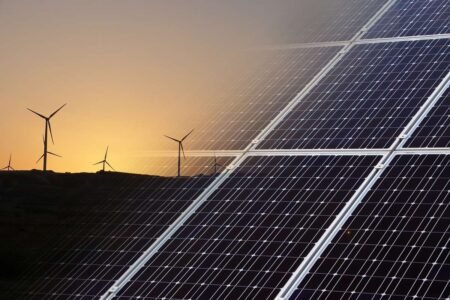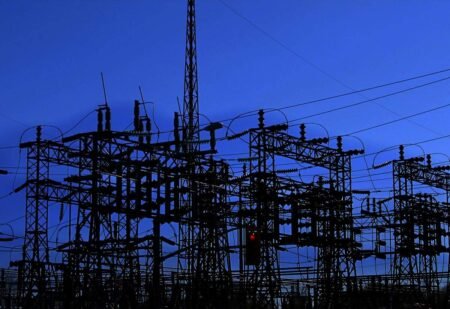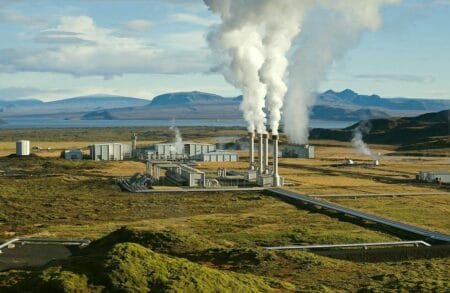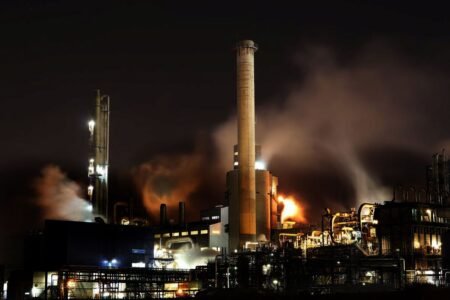The European Commission adopted on 13 October a Communication on Energy Prices, to tackle the exceptional rise in global energy prices, which is projected to last through the winter, and help Europe’s people and businesses.
Advertisement
1. Why has the Commission adopted a Communication on Energy Prices?
The European Union, like many other regions in the world, is currently facing a sharp spike in energy prices. This is a serious concern for citizens, businesses, the European Commission and governments all over the EU.
Today’s spike is principally driven by increased global demand for energy, in particular gas, linked to the global economic recovery. While energy price fluctuations have occurred in the past, the current situation is exceptional as European households and companies face the prospect of higher energy bills at a time when many have been hit by loss of income due to the pandemic. This could weigh on Europe’s recovery and its fairness and inclusiveness, and exacerbate energy poverty. It also risks undermining confidence and support in the clean energy transition which is required not just to avert disastrous climate change but also to reduce the EU’s vulnerability to fossil fuel price volatility.
The European Commission aims to help and support Member States in addressing the negative impact on households and businesses. Having listened to Member States, the European Parliament, industry and consumers, and international partners, it has prepared this Communication to enact and support appropriate measures to mitigate the impact of the current energy price rises.
2. How long is the current situation expected to last?
Market expectations on energy commodities indicate that the current price increases are likely to be temporary. Wholesale gas prices are likely to remain high over the winter months and fall in the Spring, when the situation is expected to stabilise. The prices would remain, however, higher than the average of the past years.
In the longer term, greater investment in renewables, energy efficiency, buildings and smarter energy systems in Europe will increase the EU’s energy independence from imported fossil fuels and contribute to lower wholesale prices. However, in the medium term, new adjustments of supply and demand could occur and further episodes of price volatility on wholesale markets cannot be ruled out for a variety of geopolitical, technological and economic reasons.
3. Does the Commission expect EU Member States to run out of gas this winter?
While energy supply is not at immediate risk, security of supply and gas storage levels need continuous monitoring. Current EU gas storage levels are slightly above 75%. This is below the 90% average at this time in the last 10 years, but storage levels have been steadily rising since the summer.
Together with the EU’s experts group on gas security of supply (“Gas Coordination Group”) and the European Network of Transmission System Operators for Gas (ENTSO-G), the Commission is closely monitoring the security of supply situation, including the level of gas storage and imports. As foreseen by the EU rules, ENTSO-G published its “Winter Outlook” on 12 October to assess the capacity of the gas network to cope with possible problems during the next winter. The outlook finds that the European gas infrastructure offers sufficient flexibility to the market across the winter.
4. What measures is the Commission proposing to tackle the current price spike?
The current price spike requires a rapid and coordinated response. The existing legal framework enables the EU and its Member States to take action to address the effects of sudden price fluctuations. The immediate response should prioritise tailored measures that can rapidly mitigate the effects on vulnerable groups, can easily be adjusted when the situation improves, and avoid interfering with market dynamics or dampening incentives for the transition to a decarbonised economy. In the medium term, the policy response should focus on making the EU more efficient in the use of energy, less dependent on fossil fuels and more resilient to energy price spikes, while providing affordable and clean energy to end-users.
The toolbox presented as part of this Communication allows a co-ordinated approach to protect those most at risk. It is carefully calibrated to meet the above goals.
Immediate measures to protect consumers and businesses:
- Provide emergency income support for energy-poor consumers, for example through vouchers or partial bill payments, which can be supported with EU ETS revenues;
- Authorise temporary deferrals of bill payments;
- Put in place safeguards to avoid disconnections from the grid;
- Provide temporary, targeted reductions in taxation rates for vulnerable households;
- Provide aid to companies or industries, in line with EU state aid rules;
- Enhance international energy outreach to ensure the transparency, liquidity and flexibility of international markets;
- Investigate possible anti-competitive behaviour in the energy market and ask European Securities and Markets Authority (ESMA) to further enhance monitoring of developments in the carbon market;
- Facilitate a wider access to renewable power purchase agreements and support them via flanking measures.
Medium-term measures for a decarbonised and resilient energy system:
- Step up investments in renewables, renovations and energy efficiency and speed up renewables auctions and permitting processes;
- Develop energy storage capacity, to support the evolving renewables share, including batteries and hydrogen;
- Ask European energy regulators (ACER) to study the benefits and drawbacks of the existing electricity market design and propose recommendations to the Commission where relevant;
- Consider revising the security of supply regulation to ensure a better use and functioning of gas storage in Europe;
- Explore the potential benefits of voluntary joint procurement by Member States of gas stocks;
- Set up new cross-border regional gas risk groups to analyse risks and advise Member States on the design of their national preventive and emergency action plans;
- Boost the role of consumers in the energy market, by empowering them to choose and change suppliers, generate their own electricity, and join energy communities;
- Adopt a rule book for cybersecurity for electricity;
- Propose, by December 2021, a Council Recommendation providing further guidance to Member States on how best to address the social and labour aspects of the green transition.
5. How does the EU internal energy market work, and is it the cause of the current high prices?
Before the internal energy market, the European energy system was characterised by energy monopolies and prices set by regulators, leading to an expensive, inefficient system that did not allow customers to benefit from competition between energy companies. The internal energy market has moved the EU away from this situation. The current market design allows all EU citizens to choose between different electricity and gas suppliers and provides clear price signals to incentivise investments in clean technologies. By connecting 27 national energy markets, the integrated EU energy market has brought costs down, saves millions of tons of CO2, and enhances security of supply. The internal market also facilitates consumer empowerment including through joining energy communities or producing their own electricity.
The wholesale electricity market is where the producers of energy (power plants) sell electricity, and energy retailers buy it to deliver to their clients. It is a so-called “marginal” pricing system, which works by putting on the market power plants by the order of their price, starting with the least expensive and going until the last plant is dispatched that is needed to meet consumers’ demand. It is this last plant that sets the overall price, and which is often (in the hours of higher consumer demand) a gas or coal power plant. All electricity producers are paid the same price for the same product – electricity. There is general consensus that the marginal model is the most efficient for liberalised electricity markets because generators have an interest not to bid higher than their actual operating costs. Other systems lead to more inefficient outcomes and favour speculation, to the detriment of consumers.
The market also works across borders through a process known as market coupling, which ensures efficient markets where electricity flows from areas with lower electricity prices to those with higher prices. This keeps electricity costs down for consumers throughout the EU and means that Member States can rely on supplies from their neighbours when needed, supporting security of electricity supply.
Electricity producers and suppliers also trade on forward markets. These forward prices reflect periods of high and low demand and allow both producers and suppliers to reduce the risks of short-term movements in energy prices. Effective forward markets are also a key part of the internal market.
The wholesale electricity price is one of the components of the final electricity bill paid by consumers. The final electricity bill also reflects the costs of transporting and distributing it (network costs) and taxes and levies. On average, each of the three electricity bill components makes up one third of the total bill, with some variation between Member States.
With the current wholesale electricity price being driven up by global gas prices, some have questioned whether this market model is still appropriate. As the price spikes are driven by global conditions, it is unlikely that alternative market models would produce better outcomes. Nevertheless, the Commission is now tasking ACER (the agency of European energy regulators) to look into the benefits and drawbacks of the current market model, and its implementation by Member States, to ensure that the market design continues to serve our needs.
6. Are external energy suppliers to blame for the current situation?
The current electricity price increase is primarily due to global demand for gas, which is soaring as the economic recovery is picking up. This rising demand has not yet been matched by increasing supply, and the effects are felt not only in the EU but also in other regions of the world.
Given the global nature of the current price surge, international cooperation on the supply, transport and consumption of natural gas can help in keeping natural gas prices in check. The Commission is in dialogue with the main natural gas producing and consuming countries to facilitate increased natural gas trade. This dialogue with our international partners aims at enhancing the liquidity and flexibility of the international gas market in order to ensure sufficient and competitive natural gas supplies.
Lower-than-expected gas volumes have been observed coming from Russia, tightening the market as the heating season approaches. Though it has fulfilled its long-term contracts with its European counterparts, Gazprom has offered little or no extra capacity to ease pressure on the EU gas market. Delayed infrastructure maintenance during the pandemic has also constrained gas supply from Russia and other suppliers.
7. Is the EU’s climate ambition or carbon pricing responsible for the rise in prices?
The current situation is not the result of the EU’s climate ambition. Renewable electricity prices continue to be lower and more stable than fossil fuels. Investments in clean domestic energy production and greater energy efficiency reduce the EU’s energy import bill and dependence on non-EU suppliers.
The effect of the gas price increase on the electricity price is nine times bigger than the effect of the carbon price increase. From January 2021 to September 2021, the EU ETS price has increased by about 30/tCO2, which translates into a cost increase of about 10/MWh for electricity produced from gas (assuming a 50% efficiency) and about 25/MWh for electricity produced from coal (assuming a 40% efficiency). This is clearly outweighed by the observed increase of the gas price of about 45/MWh over the same period, which translates into additional electricity production cost of about 90/MWh.
The carbon price in the EU ETS rose primarily because of higher demand for allowances due to more robust economic activity following COVID-19 and expectations linked to the EU’s 2030 climate ambition, but not only. High gas prices themselves contribute to an increasing carbon price since they lead to an increased use of coal for power generation and consequently trigger more demand for emission allowances.
Emission allowances are classified as financial instruments under the revised Directive on Markets in Financial Instruments, to ensure a safe and efficient trading environment and protect the EU carbon market against market abuse and other types of misconduct. As such, trading in emission allowances is already subject to a robust oversight regime.
Source: European Commission


